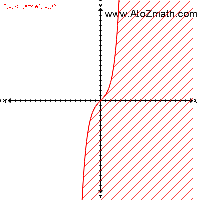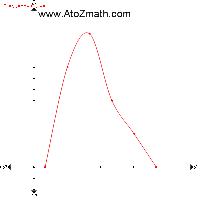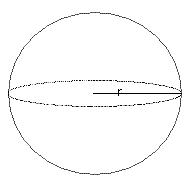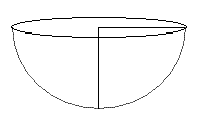| Educational Level | Secondary school, High school and College | | Program Purpose | Provide step by step solutions of your problems using online calculators (online solvers) | | Problem Source | Your textbook, etc |
| 1. Assignment problem
1.1 Assignment problem (Using Hungarian method-2)
1.2 Assignment problem (Using Hungarian method-1)
2.1 Travelling salesman problem using hungarian method
2.2 Travelling salesman problem using branch and bound (penalty) method
2.3 Travelling salesman problem using branch and bound method
2.4 Travelling salesman problem using nearest neighbor method
2.5 Travelling salesman problem using diagonal completion method
3. Crew assignment problem
2. Simplex method (Solve linear programming problem using)
1. Simplex method (BigM method)
2. Two-Phase method
3. Dual Simplex method
4. Integer Simplex method (Gomory's cutting plane method)
5. Graphical method
6. Primal to dual conversion
7. Branch and Bound method
8. 0-1 Integer programming problem
9. Revised Simplex method
3. Transportation Problem using
1. North-West corner method
2. Least cost method
3. Vogel's approximation method
4. Row minima method
5. Column minima method
6. Russell's approximation method
7. Heuristic method-1
8. Heuristic method-2
9. Optimal solution using MODI method
10. Optimal solution using stepping stone method
4. PERT and CPM
1. Network diagram
1. Activity, Predecessors
2. Activity i-j
3. Activity i-j, Name of Activity
2. Critical path, Total float, Free float, Independent float
1. Activity, Predecessors, Duration
2. Activity i-j, Duration
3. Activity i-j, Name of Activity, Duration
3. Project scheduling with uncertain activity times (Optimistic, Most likely, Pessimistic)
1. Activity, Predecessors, to, tm, tp
2. Activity i-j, to, tm, tp
3. Activity i-j, Name of Activity, to, tm, tp
4. Project crashing to solve Time-Cost Trade-Off with fixed Indirect cost
1. Activity, Predecessors, Normal Time & Cost, Crash Time & Cost and Indirect Cost
2. Activity i-j, Normal Time & Cost, Crash Time & Cost and Indirect Cost
3. Activity i-j, Name of Activity, Normal Time & Cost, Crash Time & Cost and Indirect Cost
5. Project crashing to solve Time-Cost Trade-Off with varying Indirect cost
1. Activity, Predecessors, Normal Time & Cost, Crash Time & Cost and varying Indirect Cost
2. Activity i-j, Normal Time & Cost, Crash Time & Cost and varying Indirect Cost
3. Activity i-j, Name of Activity, Normal Time & Cost, Crash Time & Cost and varying Indirect Cost
5. Sequencing Problems
1. Processing n Jobs Through 2 Machines Problem
2. Processing n Jobs Through 3 Machines Problem
3. Processing n Jobs Through m Machines Problem
4. Processing 2 Jobs Through m Machines Problem
6. Replacement and Maintenance Models
1. Model-1 : Replacement policy for items whose running cost increases with time and value of money remains constant during a period
1.1 Model-1.1
1.2 Model-1.2
1.3 Model-1.3
2. Model-2 : Replacement policy for items whose running cost increases with time but value of money changes constant rate during a period
3. Model-3 : Group replacement policy
7. Game Theory
1. Saddle Point
2. Dominance method
3. Algebraic method
4. Calculus method
5. Arithmetic method
6. Matrix method
7. 2Xn Games
8. Graphical method
9. LPP method
10. Bimatrix method
8. Data envelopment analysis (DEA method) |
1.1 Balanced Assignment Problem (Using Hungarian method)
| 1. A department has five employess with five jobs to be permormed. The time (in hours) each men will take to perform each job is given in the effectiveness matrix.
| | Employees | | | I | II | III | IV | V | | Jobs | A | 10 | 5 | 113 | 15 | 16 | | B | 3 | 9 | 18 | 13 | 6 | | C | 10 | 7 | 2 | 2 | 2 | | D | 7 | 11 | 9 | 7 | 12 | | E | 7 | 9 | 10 | 4 | 12 |
How should the jobs be allocated, one per employee, so as to minimize the total man-hours?
|
| 1.2 Unbalanced Assignment Problem (Using Hungarian method)
| 2. In the modification of a plant layout of a factory four new machines M1, M2, M3 and M4 are to be installed in a machine shop. There are five vacant places A, B, C, D and E available. Because of limited space, machine M2 cannot be placed at C and M3 cannot be placed at A. The cost of locating a machine at a place (in hundred rupess) is as follows.
| | Location | | | A | B | C | D | E | | Machine | M1 | 9 | 11 | 15 | 10 | 11 | | M2 | 12 | 9 | -- | 10 | 9 | | M3 | -- | 11 | 14 | 11 | 7 | | M4 | 14 | 8 | 12 | 7 | 8 |
Find the optimal assignment schedule.
|
| | | | 3 Crew assignment problem
| 1. Best-ride airlines that operates seven days a week has the following time-table.
| Delhi - Mumbai | | Mumbai - Delhi | | Flight No | Departure | Arrival | | 1 | 7.00 | 8.00 | | 2 | 8.00 | 9.00 | | 3 | 13.00 | 14.00 | | 4 | 18.00 | 19.00 |
| | | Flight No | Departure | Arrival | | 101 | 8.00 | 9.00 | | 102 | 9.00 | 10.00 | | 103 | 12.00 | 13.00 | | 104 | 17.00 | 18.00 |
|
Crews must have a minimum layover of 5 hours between flights. Obtain the pairing of flights that minimizes layover time away from home. For any given pairing, the crew will be based at the city that results in the smaller layover. For each pair also mention the city where crew should be based.
|
|
| | | | 2.1 Simplex method | 1. Use the simplex method to solve the following LP problem.
Maximize Z = 3x1 + 5x2 + 4x3
subject to the constraints
2x1 + 3x2 ≤ 8
2x2 + 5x3 ≤ 10
3x1 + 2x2 + 4x3 ≤ 15
and x1, x2, x3 ≥ 0
2. Use the simplex method to solve the following LP problem.
Maximize Z = 4x1 + 3x2
subject to the constraints
2x1 + x2 ≤ 1000
x1 + x2 ≤ 800
x1 ≤ 400
x2 ≤ 700
and x1, x2 ≥ 0
|
| | 2.2 BigM method | 1. Use the penalty (Big - M) method to solve the following LP problem.
Minimize Z = 5x1 + 3x2
subject to the constraints
2x1 + 4x2 ≤ 12
2x1 + 2x2 = 10
5x1 + 2x2 ≥ 10
and x1, x2 ≥ 0
2. Use the penalty (Big - M) method to solve the following LP problem.
Minimize Z = x1 + 2x2 + 3x3 - x4
subject to the constraints
x1 + 2x2 + 3x3 = 15
2x1 + x2 + 5x3 = 20
x1 + 2x2 + x3 + x4 = 10
and x1, x2, x3, x4 ≥ 0 |
| | | | 2.3 Two-Phase method | 1. Solve the following LP problem by using the Two-Phase method.
Minimize Z = x1 + x2
subject to the constraints
2x1 + 4x2 ≥ 4
x1 + 7x2 ≥ 7
and x1, x2 ≥ 0
2. Solve the following LP problem by using the Two-Phase method.
Minimize Z = x1 - 2x2 - 3x3
subject to the constraints
-2x1 + 3x2 + 3x3 = 2
2x1 + 3x2 + 4x3 = 1
and x1, x2, x3 ≥ 0 |
| | 2.4 Dual Simplex method | 1. Solve the following LP problem by using the Two-Phase method.
Minimize Z = x1 + x2
subject to the constraints
2x1 + 4x2 ≥ 4
x1 + 7x2 ≥ 7
and x1, x2 ≥ 0
2. Solve the following LP problem by using the Two-Phase method.
Minimize Z = x1 - 2x2 - 3x3
subject to the constraints
-2x1 + 3x2 + 3x3 = 2
2x1 + 3x2 + 4x3 = 1
and x1, x2, x3 ≥ 0 |
| | | | 2.5 Gomorys Integer Cutting method | 1. Solve the following integer programming problem using Gomory's cutting plane algorithm.
Maximize Z = x1 + x2
subject to the constraints
3x1 + 2x2 ≤ 5
x2 ≤ 2
and x1, x2 ≥ 0 and are integers.
2. Solve the following integer programming problem using Gomory's cutting plane algorithm.
Maximize Z = 2x1 + 20x2 - 10x3
subject to the constraints
2x1 + 20x2 + 4x3 ≤ 15
6x1 + 20x2 + 4x3 ≤ 20
and x1, x2, x3 ≥ 0 and are integers. |
| | 2.6 Graphical method | 1. Use graphical method to solve following LP problem.
Maximize Z = x1 + x2
subject to the constraints
3x1 + 2x2 ≤ 5
x2 ≤ 2
and x1, x2 ≥ 0
2. Use graphical method to solve following LP problem.
Maximize Z = 2x1 + x2
subject to the constraints
x1 + 2x2 ≤ 10
x1 + x2 ≤ 6
x1 - x2 ≤ 2
x1 - 2x2 ≤ 1
and x1, x2 ≥ 0
|
| | | | 2.7 Primal to dual conversion | 1. Write the dual to the following LP problem.
Maximize Z = x1 - x2 + 3x3
subject to the constraints
x1 + x2 + x3 ≤ 10
2x1 - x2 - x3 ≤ 2
2x1 - 2x2 - 3x3 ≤ 6
and x1, x2, x3 ≥ 0
2. Write the dual to the following LP problem.
Minimize Z = 3x1 - 2x2 + 4x3
subject to the constraints
3x1 + 5x2 + 4x3 ≥ 7
6x1 + x2 + 3x3 ≥ 4
7x1 - 2x2 - x3 ≤ 10
x1 - 2x2 + 5x3 ≥ 3
4x1 + 7x2 - 2x3 ≥ 2
and x1, x2, x3 ≥ 0 |
| | 2.8 Branch and Bound method | 1. Solve the following LP problem by using Branch and Bound method
Max Z = 7x1 + 9x2
subject to
-x1 + 3x2 ≤ 6
7x1 + x2 ≤ 35
x2 ≤ 7
and x1,x2 ≥ 0
2. Solve the following LP problem by using Branch and Bound method
Max Z = 3x1 + 5x2
subject to
2x1 + 4x2 ≤ 25
x1 ≤ 8
2x2 ≤ 10
and x1,x2 ≥ 0
|
| | | | 2.9 0-1 Integer programming problem | 1. Solve LP using zero-one Integer programming problem method
Max Z = 300x1 + 90x2 + 400x3 + 150x4
subject to
35000x1 + 10000x2 + 25000x3 + 90000x4 ≤ 120000
4x1 + 2x2 + 7x3 + 3x4 ≤ 12
x1 + x2 ≤ 1
and x1,x2,x3,x4 ≥ 0
2. Solve LP using 0-1 Integer programming problem method
MAX Z = 650x1 + 700x2 + 225x3 + 250x4
subject to
700x1 + 850x2 + 300x3 + 350x4 ≤ 1200
550x1 + 550x2 + 150x3 + 200x4 ≤ 700
400x1 + 350x2 + 100x3 ≤ 400
x1 + x2 ≥ 1
-x3 + x4 ≤ 1
and x1,x2,x3,x4 ≥ 0
|
| | 2.9 Revised Simplex method | 1. Solve the following LP problem by using Revised Simplex method
MAX Z = 3x1 + 5x2
subject to
x1 ≤ 4
x2 ≤ 6
3x1 + 2x2 ≤ 18
and x1,x2 ≥ 0
2. Solve the following LP problem by using Revised Simplex method
MAX Z = 2x1 + x2
subject to
3x1 + 4x2 ≤ 6
6x1 + x2 ≤ 3
and x1,x2 ≥ 0
|
|
| | | | 1. A Company has 3 production facilities S1, S2 and S3 with production capacity of 7, 9 and 18 units (in 100's) per week of a product, respectively. These units are tobe shipped to 4 warehouses D1, D2, D3 and D4 with requirement of 5,6,7 and 14 units (in 100's) per week, respectively. The transportation costs (in rupees) per unit between factories to warehouses are given in the table below.
| D1 | D2 | D3 | D4 | Capacity | | S1 | 19 | 30 | 50 | 10 | 7 | | S2 | 70 | 30 | 40 | 60 | 9 | | S3 | 40 | 8 | 70 | 20 | 18 | | Demand | 5 | 8 | 7 | 14 | 34 |
Find initial basic feasible solution for given problem by using
(a) North-West corner method
(b) Least cost method
(c) Vogel's approximation method
(d) obtain an optimal solution by MODI method
if the object is to minimize the total transportation cost.
2. Find an initial basic feasible solution for given transportation problem by using
(a) North-West corner method
(b) Least cost method
(c) Vogel's approximation method
| D1 | D2 | D3 | D4 | Supply | | S1 | 11 | 13 | 17 | 14 | 250 | | S2 | 16 | 18 | 14 | 10 | 300 | | S3 | 21 | 24 | 13 | 10 | 400 | | Demand | 200 | 225 | 275 | 250 | |
|
| | 3. A company has factories at F1, F2 and F3 which supply to warehouses at W1, W2 and W3. Weekly factory capacities are 200, 160 and 90 units, respectively. Weekly warehouse requiremnet are 180, 120 and 150 units, respectively. Unit shipping costs (in rupess) are as follows:
| W1 | W2 | W3 | Supply | | F1 | 16 | 20 | 12 | 200 | | F2 | 14 | 8 | 18 | 160 | | F3 | 26 | 24 | 16 | 90 | | Demand | 180 | 120 | 150 | 450 |
Determine the optimal distribution for this company to minimize total shipping cost.
4. Find an initial basic feasible solution for given transportation problem by using
(a) North-West corner method
(b) Least cost method
(c) Vogel's approximation method
| P | Q | R | S | Supply | | A | 6 | 3 | 5 | 4 | 22 | | B | 5 | 9 | 2 | 7 | 15 | | C | 5 | 7 | 8 | 6 | 8 | | Demand | 7 | 12 | 17 | 9 | 45 |
|
|
| | | | 1. An assembly is to be made from two parts X and Y. Both parts must be turned on a lathe Y must be polished where as X need not be polished. The sequence of acitivities, together with their predecessors, is given below| Activity | Description | Predecessor Activity | | A | Open work order | - | | B | Get material for X | A | | C | Get material for Y | A | | D | Turn X on lathe | B | | E | Turn Y on lathe | B,C | | F | Polish Y | E | | G | Assemble X and Y | D,F | | H | Pack | G |
Draw a network diagram of activities for the project.
|
| | 2. An established company has decided to add a new product to its line. It will buy the product from a manufacturing concern, package it, and sell it to a number of distributors that have been selected on a geographical basis. Market research has already indicated the volume expected and the size of sales force required. The steps shown in the following table are to be planned.| Activity | Description | Predecessor Activity | Duration (days) | | A | Organize sales office | - | 6 | | B | Hire salesman | A | 4 | | C | Train salesman | B | 7 | | D | Select advertising agency | A | 2 | | E | Plan advertising campaign | D | 4 | | F | Conduct advertising campaign | E | 10 | | G | Design package | - | 2 | | H | Setup packaging campaign | G | 10 | | I | Package initial stocks | J,H | 6 | | J | Order stock from manufacturer | - | 13 | | K | Select distributors | A | 9 | | L | Sell to distributors | C,K | 3 | | M | Ship stocks to distributors | I,L | 5 |
(a) Draw an arrow diagram for the project.
(b) Indicate the criticla path.
(c) For each non-critical activity, find the total and free float.
|
|
| | | | 1. There are seven jobs, each of which has to go through the machines A and B in the order AB. Processing times in hours are as follows.| Job | 1 | 2 | 3 | 4 | 5 | 6 | 7 | | Machine A | 3 | 12 | 15 | 6 | 10 | 11 | 9 | | Machine B | 8 | 10 | 10 | 6 | 12 | 1 | 3 |
Decide a sequence of these jobs that will minimize the total elapsed time T. Also find T and idle time for machines A and B.
|
| | 2. Find the sequence that minimizes the total time required in performing the following job on three machines in the order ABC. Processing times (in hours) are given in the following table.| Job | 1 | 2 | 3 | 4 | 5 | | Machine A | 8 | 10 | 6 | 7 | 11 | | Machine B | 5 | 6 | 2 | 3 | 4 | | Machine C | 4 | 9 | 8 | 6 | 5 |
|
|
| | | | Model-1.1 | 1. A firm is considering the replacement of a machine, whose cost price is Rs 12,200 and its scrap value is Rs 200. From experience the running (maintenance and operating) costs are found to be as follows:
| Year | 1 | 2 | 3 | 4 | 5 | 6 | 7 | 8 |
|---|
| Running Cost | 200 | 500 | 800 | 1,200 | 1,800 | 2,500 | 3,200 | 4,000 |
|---|
When should the machine be replaced? |
| | | | Model-1.2 | 1. The data collected in running a machine, the cost of which is Rs 60,000 are given below:
| Year | 1 | 2 | 3 | 4 | 5 |
|---|
| Resale Value | 42,000 | 30,000 | 20,400 | 14,400 | 9,650 |
|---|
| Cost of spares | 4,000 | 4,270 | 4,880 | 5,700 | 6,800 |
|---|
| Cost of labour | 14,000 | 16,000 | 18,000 | 21,000 | 25,000 |
|---|
Determine the optimum period for replacement of the machine. |
| | | | Model-1.3 | | 1. Machine A costs Rs 45,000 and its operating costs are estimated to be Rs 1,000 for the first year increasing by Rs 10,000 per year in the second and subsequent years. Machine B costs Rs 50,000 and operating costs are Rs 2,000 for the first year, increasing by Rs 4,000 in the second and subsequent years. If at present we have a machine of type A, should we replace it with B? if so when? Assume that both machines have no resale value and their future costs are not discounted. |
| | | Model-2
Replacement policy for items whose running cost increases with time but value of money changes constant rate during a period | 1. An engineering company is offered a material handling equipment A. It is priced at Rs 60,000 includeing cost of installation. The costs for operation and maintenance are estimated to be Rs 10,000 for each of the first five years, increasing every year by Rs 3,000 in the sixth and subsequent years. The company expects a return of 10 percent on all its investment. What is the optimal replacement period?
| Year | 1 | 2 | 3 | 4 | 5 | 6 | 7 |
|---|
| Running Cost | 10,000 | 10,000 | 10,000 | 10,000 | 10,000 | 13,000 | 16,000 |
|---|
2. A company is buying mini computers. It costs Rs 5 lakh, and its running and maintenance costs are Rs 60,000 for each of the first five years, increasing by Rs 20,000 per year in the sixth and subsequent years. If the money is worth 10 percent per year, What is the optimal replacement period? |
| | | Model-3
Group replacement policy | 1. A computer contains 10,000 resistors. When any resistor fails, it is replaced. The cost of replacing a resistor individually is Rs 1 only. If all the resistors are replaced at the same time, the cost per resistor would be reduced to 35 paise. The percentage of surviving resistors say S(t) at the end of month t and the probability of failure P(t) during the month t are as follows:
| t | 0 | 1 | 2 | 3 | 4 | 5 | 6 |
|---|
| P(t) | 0 | 0.03 | 0.07 | 0.20 | 0.40 | 0.15 | 0.15 |
|---|
What is the optimal replacement plan?
2. The following mortality rates have been observed for a certain type of fuse:
| t | 0 | 1 | 2 | 3 | 4 | 5 |
|---|
| P(t) | 0 | 0.05 | 0.10 | 0.20 | 0.40 | 0.25 |
|---|
There are 1,000 fuses in use and it costs Rs 5 to replace an individual fuse. If all fuses were replaced simultaneously it would cost Rs 1.25 per fuse. It is proposed to replace all fuses at fixed intervals of time, whether or not they have burnt out, and to contiune replacing burnt out fuses as they fail. At what time intervals should the group replacement be made? Also prove that this optimal policy is superior to the straight forward policy of replacing each fuse only when it fails. |
|
| | | | 7.1 Saddle Point | 1. For the game with payoff matrix | | | Player B | | | | | | B1 | B2 | B3 | | | | Player A | A1 | | -1 | 2 | -2 | | | A2 | | 6 | 4 | -6 | |
determine the best strategies for players A and B. Also determine the value of game. Is this game saddle point? |
| | 7.2 Dominance method | 1. Dominance Example | | | Player B | | | | | | B1 | B2 | B3 | B4 | | | | Player A | A1 | | 3 | 5 | 4 | 2 | | | A2 | | 5 | 6 | 2 | 4 | | | A3 | | 2 | 1 | 4 | 0 | | | A4 | | 3 | 3 | 5 | 2 | |
|
| | | | 7.3 Algebraic method | 1. Find the solution of game using algebraic method for the following pay-off matrix | | | Player B | | | | | | B1 | B2 | | | | Player A | A1 | | 1 | 7 | | | A2 | | 6 | 2 | |
|
| | 7.4 Calculus method | 1. Find the solution of game using calculus method for the following pay-off matrix | | | Player B | | | | | | B1 | B2 | | | | Player A | A1 | | 1 | 3 | | | A2 | | 5 | 2 | |
|
| | | | 7.5 Arithmetic method | 1. Find the solution of game using arithmetic method for the following pay-off matrix | | | Player B | | | | | | B1 | B2 | B3 | | | | Player A | A1 | | 10 | 5 | -2 | | | A2 | | 13 | 12 | 15 | | | A3 | | 16 | 14 | 10 | |
|
| | 7.6 Matrix method | 1. Find the solution of game using matrix method for the following pay-off matrix | | | Player B | | | | | | B1 | B2 | B3 | | | | Player A | A1 | | 1 | 7 | 2 | | | A2 | | 6 | 2 | 7 | | | A3 | | 5 | 1 | 6 | |
|
| | | | 7.7 2Xn Games | 1. Find the solution of game using 2Xn Games method for the following pay-off matrix | | | Player B | | | | | | B1 | B2 | | | | Player A | A1 | | -3 | 4 | | | A2 | | -1 | 1 | | | A3 | | 7 | -2 | |
|
| | 7.8 Graphical method | 1. Find the solution of game using graphical method method for the following pay-off matrix | | | Player B | | | | | | B1 | B2 | | | | Player A | A1 | | 1 | -3 | | | A2 | | 3 | 5 | | | A3 | | -1 | 6 | | | A4 | | 4 | 1 | | | A5 | | 2 | 2 | | | A6 | | -5 | 0 | |
|
| | | | 7.9 LPP method | 1. Find the solution of game using linear programming method for the following pay-off matrix | | | Player B | | | | | | B1 | B2 | B3 | | | | Player A | A1 | | 3 | -4 | 2 | | | A2 | | 1 | -7 | -3 | | | A3 | | -2 | 4 | 7 | |
|
| |
|
|
|































No hay comentarios:
Publicar un comentario